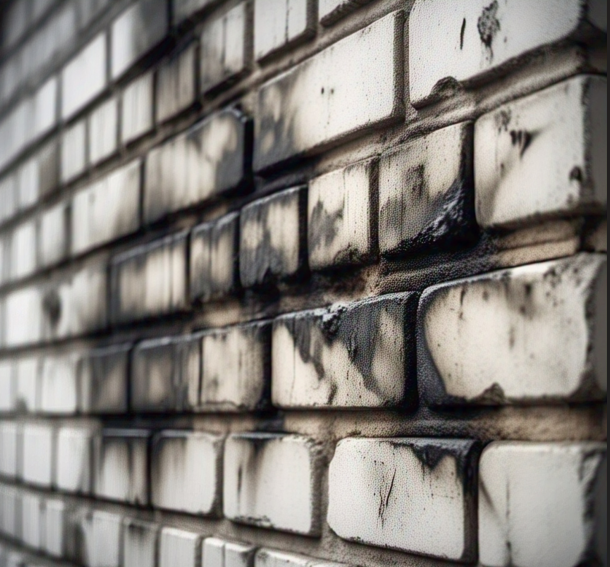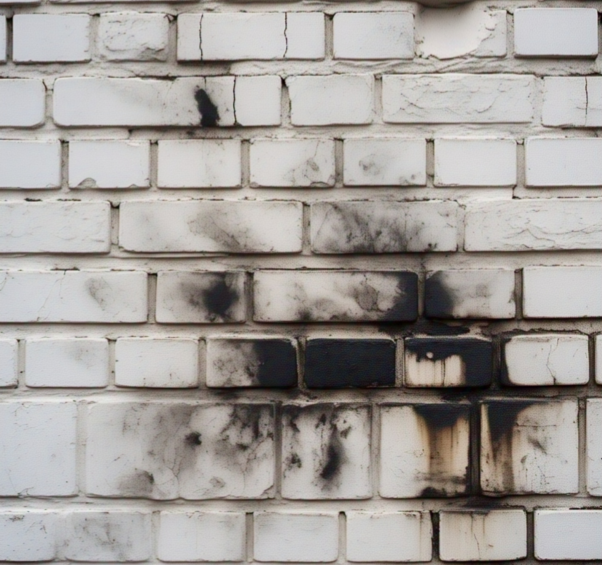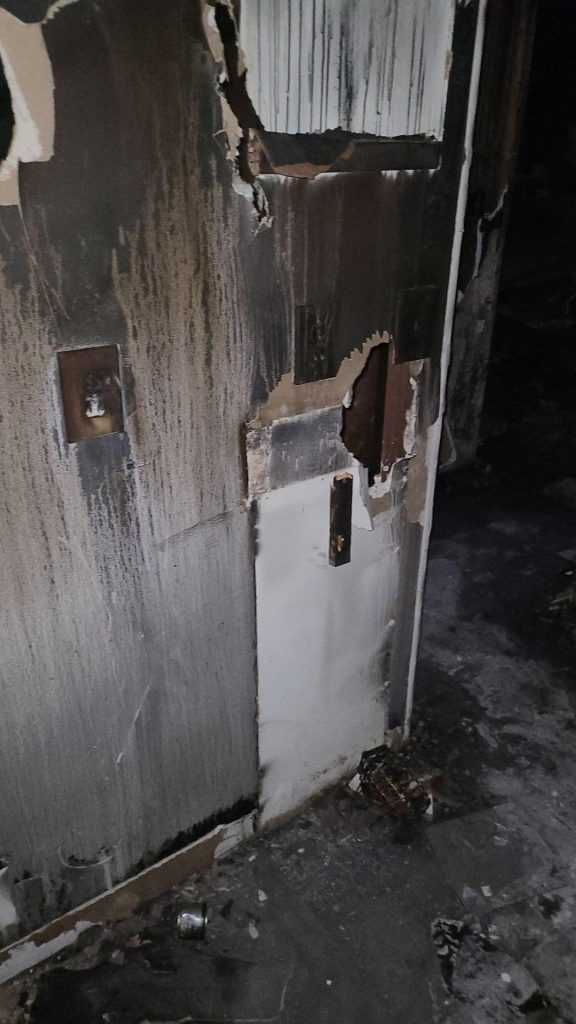Overview
Smoke damage after a fire can be as destructive as the flames themselves. It stains surfaces, embeds deep odors, and poses health hazards if not handled quickly and properly. This guide walks you through the essential steps to clean smoke damage from walls and ceilings whether you’re tackling it as a DIY project or deciding when to call a professional.

A Paul Roman’s Story with a Real Lesson
Paul, a father of two and full-time nurse living in a quiet Indianapolis suburb, lit a cinnamon-scented candle one autumn evening. He stepped out briefly for groceries. When he returned, the candle had tipped over. While the fire had been quickly contained and didn’t cause structural damage, the smoke had blackened his white hallway walls and ceilings. The smell was overpowering, and his quick attempt at cleaning with soap and water only made the stains worse.

Paul didn’t realize at the time that smoke damage is more than surface deep. What followed was a crash course in smoke remediation what works, what doesn’t, and what he should’ve done from the start. He story mirrors what many homeowners face after even a small fire incident.
Why Acting Quickly Matters
Smoke and soot are acidic. The longer they sit, the more they can damage surfaces, degrade air quality, and embed odors into the structure of your home. Left untreated, smoke damage can:
- Permanently stain walls and ceilings
- Damage paint and finishes
- Cause respiratory irritation and allergic reactions
- Lead to long-term odor problems
That’s why fast and effective cleaning is essential. Let’s explore how to do it right.
Supplies You’ll Need to Clean Smoke Damage
Before getting started, gather the necessary tools and materials:
- Trisodium phosphate (TSP) or a smoke damage-specific cleaner
- Warm water
- Buckets
- Clean, non-abrasive sponges or rags
- Rubber gloves and protective goggles
- Face mask or respirator
- Drop cloths or plastic sheets to protect floors and furniture
- Optional: white vinegar or baking soda to help neutralize odor
Step-by-Step Process to Clean Smoke Damage from Walls and Ceilings
1. Ensure Safety and Ventilation
Open windows and doors to allow airflow. Turn off your HVAC system to prevent the spread of airborne particles. Wear protective gloves, goggles, and a face mask to avoid exposure to soot and cleaning fumes.
2. Remove Loose Soot First
Use a chemical sponge (also known as a dry-cleaning sponge) or a HEPA vacuum to remove loose soot from the walls and ceiling. Do not use a wet sponge at this stage, as moisture can smear the soot and make it harder to clean.
3. Prepare a Cleaning Solution
Mix one tablespoon of trisodium phosphate (TSP) with one gallon of warm water. If TSP is not available, use a heavy-duty degreaser formulated for fire damage.
4. Gently Clean the Surface
Start at the bottom of the wall and work your way up to avoid streaking. Dip the sponge into the cleaning solution, wring it out slightly, and scrub the walls gently. For ceilings, use a sponge mop with an extendable handle. Rinse your sponge regularly in a separate bucket of clean water.
5. Rinse and Dry
After cleaning, wipe down the surface with a clean sponge dipped in warm water to remove any cleaner residue. Use dry towels or allow the walls and ceiling to air dry completely.
6. Repeat as Needed
Stubborn stains may require a second round of cleaning or a slightly stronger solution. Avoid harsh scrubbing, which can damage the paint or drywall surface.
How to Eliminate Smoke Odor After a Fire
Cleaning visible damage is only half the battle. Smoke odor can linger for weeks if not treated properly. Here are effective ways to eliminate the smell:
- Place open bowls of white vinegar around the room to absorb the odor
- Sprinkle baking soda on carpets and upholstered furniture, then vacuum after a few hours
- Use air purifiers with HEPA filters to capture airborne particles
- Rent or hire ozone machines or activated charcoal air scrubbers for heavy-duty odor removal
When Should You Hire a Professional?

Smoke damage can become overwhelming, especially in multi-room or high-ceiling scenarios. You should consider calling a professional smoke damage restoration company if:
- Multiple rooms are affected
- Walls or ceilings are permanently stained or discolored
- The smoke odor persists after thorough cleaning
- You or family members have asthma or respiratory conditions
Certified restoration companies use advanced equipment such as thermal foggers, negative air machines, and soda blasting tools that are not readily available to homeowners.
For example, companies like PuroClean Disaster Restoration serve regions in Indiana, offering 24/7 emergency smoke and fire damage cleanup with trained technicians.
For immediate assistance with fire damage restoration, contact PuroClean Disaster Restoration, Call (317) 467-4436.
PuroClean Disaster Restoration has over 19 years of experience in the fire damage restoration industry, with over 100 5 Star reviews on Google serving Indianapolis. Click on this link to see it’s online reviews and ratings.
How Restoration Professionals Handle Smoke Damage
A professional team will typically follow these steps:
- Initial assessment and moisture/smoke testing
- Removal of loose soot using commercial vacuums
- Deep cleaning with proprietary cleaning agents
- Use of air scrubbers, ozone machines, or thermal foggers
- Sealing and repainting walls or ceilings if necessary
Hiring professionals ensures the problem is addressed thoroughly, preventing long-term damage and recurring odor.
Frequently Asked Questions (FAQ)
What is the best cleaner for smoke damage on walls?
Trisodium phosphate (TSP) is widely considered the most effective cleaner for smoke-damaged surfaces. It cuts through soot and neutralizes acidic residue. If unavailable, heavy-duty degreasers formulated for fire damage are good alternatives.
Can you paint over smoke-damaged walls?
No. You must clean the walls first and use a stain-blocking primer such as Kilz or Zinsser B-I-N before painting. Skipping the cleaning step can lead to peeling paint and odor issues.
How do you get rid of the smoke smell after a fire?
Use a combination of white vinegar, baking soda, and air purifiers. For persistent odors, ozone machines or activated charcoal filters are highly effective. Ventilation and professional deodorizing treatments may be necessary in severe cases.
Is smoke damage dangerous to your health?
Yes. Smoke contains harmful particles and chemicals that can irritate the lungs, trigger asthma, and cause long-term respiratory issues. Prolonged exposure to uncleaned smoke damage can also affect skin and eyes.
Can I clean smoke damage myself?
Yes, if the affected area is limited and the damage is not extensive. Use protective equipment, follow the step-by-step process carefully, and monitor for lingering odors. For widespread damage or health concerns, it’s better to call a professional.
What happens if you don’t clean smoke damage?
Leaving smoke and soot untreated can lead to permanent staining, paint and surface degradation, lingering odors, and health risks. Over time, the damage may spread or require more extensive repair and restoration.
How do I clean the ceiling after smoke damage?
Use a chemical sponge or HEPA vacuum to remove loose soot. Follow up with a TSP solution applied with a sponge mop. Clean in small sections and dry thoroughly.
What kind of paint should I use after cleaning smoke damage?
Use a primer designed for smoke sealing such as Kilz Original or Zinsser B-I-N, followed by interior latex paint. The primer prevents stains and odors from bleeding through the topcoat.
Can smoke damage spread?
Yes. Smoke particles can travel through HVAC systems and vents, settling into other rooms, fabrics, and porous materials. Quick action is crucial to contain and clean affected areas.
How much does professional smoke damage cleaning cost?
Costs vary depending on the size and severity of the damage. Minor room cleanups may cost between $300–$1,000, while large-scale restoration services can range from $2,000–$10,000 or more, especially if structural repairs are needed.
Conclusion
Cleaning smoke damage from your home’s walls and ceilings is a task that requires more than basic cleaning knowledge. It demands urgency, the right tools, and a methodical approach. As Paul discovered, smoke may not always leave behind flames, but it leaves damage that can escalate quickly if left untreated.
Whether you’re tackling it yourself or reaching out to a professional restoration company, act promptly and thoroughly. Your health, home value, and peace of mind depend on it.
Need professional help in Indiana?
PuroClean Disaster Restoration offers 24/7 fire and smoke damage cleanup services. Contact us today for a comprehensive assessment and fast response.
